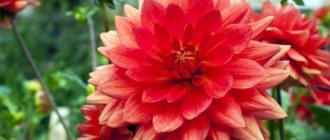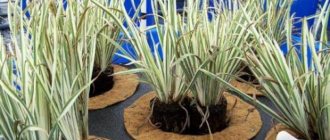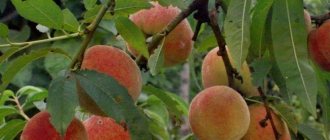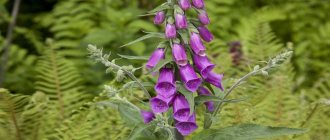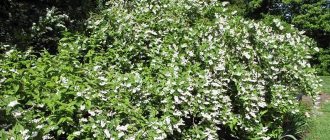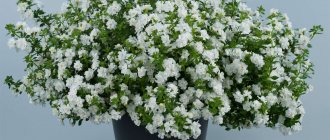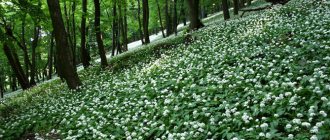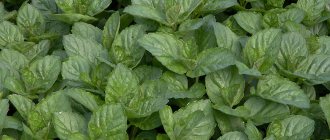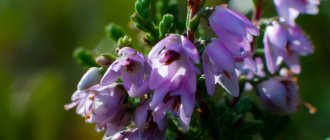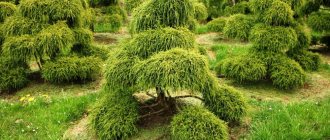Elderberry is one of “our” shrubs. It can be found in parks and on the edges of forests, but for some reason the super-hardy beauty is considered not a very decorative crop to introduce into gardens. But the elderberry has something to boast about: a thick, curly crown, very beautiful summer flowering and spectacular, albeit not always edible, fruits - these are just the obvious advantages. Black elderberry is one of the most fragrant plants. Luxurious wines, syrups, jams are made from its inflorescences, and its berries are a healing pleasure with an unusual taste and aroma. And unpleasant-smelling species repel rodents and pests. This shrub is boring only at first glance. It has a variety of variegated or unusually colored decorative forms. The only significant drawback of elderberries is their rather large size, but they are also indispensable for hedges.
Black elderberry. ©John Weiser
Familiar does not mean boring shrub
Also known as sambuca, the domestic elderberry shrub is reliable, classic and a little forgotten. Having received its botanical name - sambucus - either in honor of the musical instrument that is made from its shoots, or in honor of the dye pigments that are still actively used today, elderberry can surprise not only from the point of view of endurance. The large shrub that is so familiar to us is an ornamental plant as well as a useful one.
Elderberry is a shrub or small tree with a dense, dense crown, fast-growing and massive. The foliage is opposite, imparipinnate, and looks elegant. Umbrella inflorescences are lacy and elegant. Black or red, sparkling and quite beautiful elderberries are inedible in their raw form (and in red elderberry they are also poisonous). But with black elderberry, when cooked, they allow you to get some of the most original berry preparations for the winter.
Despite the fact that elderberry seems boring, it boasts considerable variety. In nature, it is represented by 40 plant species, 14 of which are considered ornamental. True, some have not taken root at all in garden culture and are very rare.
Black elderberry (Sambucus nigra 'Black lace'). © SpanMaja
Let's take a closer look at the best decorative types of elderberry:
Black elderberry
The most famous type of elderberry is the black elderberry (Sambucus nigra). This is a very spectacular, wide shrub with a voluminous crown that is naturally ideally round or umbrella-shaped. The black elderberry reaches a height of 5-7 meters, but at the same time it forms well and is kept in check by pruning. It is especially valuable as a high, vertical, massive base for fences along the perimeter of the site. The bark is gray, light, leaves up to 30 cm in length have sharp-toothed lobes. The flowers are creamy-yellowish, very fragrant, collected in thick openwork umbrellas of inflorescences up to 20 cm in diameter. Its black, glossy fruits adhere well to the fruit and are suitable for preservation (and the inflorescences are ideal for wine, syrups, and tinctures).
The basic plant today, as an ornamental species, has been replaced by decorative forms - pyramidal (pyramidalis), weeping (pendula), low (nana), golden-leaved (aurea), white-variegated (albo-variegata), golden-variegated (aureo-variegata) , powdery or spotted (pulverulenta), dissected with exotic leaves (laciniata).
Black elderberry (Sambucus nigra var. laciniata). © Onderwijsgek
There are also some compact varieties of black elderberry.:
- 'Linearis' is only up to 2.5 meters high with a beautiful lush crown, but the variety does not bloom annually in regions with harsh winters;
- 'Luteovariegata' is a wide shrub limited to 1.5 m in height with slow growth and stunning variegated leaves;
- 'Guincho Purple' up to 2 meters high, whose leaves change bright green color first to an almost inky summer outfit, and then explode in autumn with flashes of carmine red, with pink flowers and purple bark;
- purple-leaved compact variety 'Black Beauty';
- the classic inky purple beauty 'Purpurea';
- medium-sized, up to 2.5 cm variety with silver and cream stripes or a border along the edge of the leaf, fast growth and a very flattened crown 'Marginata', etc.
Black elderberry "Madonna" (Sambucus nigra 'Madonna'). © Andrey Zharkikh
Black elderberry (Sambucus nigra 'Black lace'). © Wendy:
Black elderberry "Pulverulenta" (Sambucus nigra 'Pulverulenta'). © Mark Watts
Red elderberry
Red elderberry (Sambucus racemosa), also known as elderberry racemosa, is a much more compact plant. Its height is limited to 2-4 meters, but its original, glowing red berries are poisonous, and the shrub does not bloom so massively. But the last characteristic is by no means a disadvantage. Simply airy, lacy, rare inflorescences of this elderberry seem magical, shimmering and unique. The crown of the red elderberry is surprisingly wide and dense, and the leaves are much more beautiful, with pointed, graceful lobes. The greenish or yellowish flowers in ovoid inflorescences look like foam and last up to three weeks.
Red elderberry (Sambucus racemosa). © naturgucker
One of the main advantages of this species is its very fast growth, the ability to choose decorative forms and grow as a standard plant. The most attractive garden forms of red elderberry include:
- low-growing Nana, a dwarf shrub with a very compact crown;
- dissect-leaved (laciniata) with a tent-like crown and surprisingly filigree foliage;
- pinnate elderberry (plumosa), with teeth along the edge reaching almost half of the leaf blade and purple young leaves, as well as one of its varieties - yellow-leaved 'Plumosa Aurea';
- form purpurea with pink-purple inflorescences;
- flavescens with yellow-orange fruits;
- openwork and weightless thin-leaved tenuifolia;.
- golden leaf variety 'Sutherland Gold'.
Elderberry
The charming “tiered” crown is the pride of the currently rare, but very interesting species of Elderberry (Sambucus canadensis). Yellowish-gray bark, large, compound leaves with a yellowish color, creamy-yellow flowers in large corymbs and round, dark purple fruits allow this elderberry to look great throughout the active season. This is a shade-tolerant crop, fast-growing and in gardens not exceeding 3 meters. It brings a richness of texture, amazing structure and graphics, its foliage is ornamental, and its crown is surprisingly elegant. In addition to the basic form, there are also interesting decorative varieties:
- large-leaved elderberry maxima;
- graceful, sharp-lobed form with dissected leaves (acutiloba);
- yellow-leaved, green-fruited elderberry (chlorocarpa);
- golden-leaved form "Aurea", with yellow spring foliage, summer light green dress and a golden explosion in autumn, the beauty of which is emphasized by cherry fruits.
Elderberry (Sambucus canadensis). © Phillip Merritt
Elderberry Siebold
The beauty of the crown structure also distinguishes another of the rarer species - Siebold Elderberry (Sambucus sieboldiana). The structure of its leaves is somewhat reminiscent of a palm tree. A powerful, elegant plant up to 8 meters high in gardens is usually limited to 3-3.5 m. The leaf lobes reach 20 cm in length and 5-6 in width, sharp, their long tips emphasize the beauty of the structure. The inflorescences, like the fruit clusters, are loose and a little sloppy.
Siebold's elderberry (Sambucus sieboldiana). © Qwert1234
Elderberry herbaceous
An unusual plant for the genus is Elderberry (Sambucus ebulus). Despite belonging to the genus of shrubs, it is a herbaceous perennial, reaching a height of 1.5 meters. Carved elegant leaves form openwork clumps, umbrella inflorescences crown the shoots, and large dark fruits are poisonous. This plant is very attractive, but it has become famous, first of all, for its unpleasant, repulsive aroma, which perfectly repels insects and rodents.
But the dried shoots of the plant smell very pleasant and are used to pour apples for storage. It is very aggressive, the roots are thick, and it is difficult to remove it from the garden. Therefore, herbaceous elderberry requires planting in areas where it can spread out (or initially contained by buried screens).
grass eelweed (Sambucus ebulus). © naturgucker
Much less common:
- Elderberry (Sambucus latipinna), the fruits of which are purple, dark in color, and the leaves are larger;
- tall, up to 4 m in height, slender Siberian elderberry (sambucus sibirica)
- profusely flowering, similar to the red Elderberry, downy Elderberry (Sambucus pubens), up to 2.5 m in height and diameter;
- low, up to 2 m, suitable for landscape hedges Kamchatka elderberry (Sambucus kamtschatica);
- Blue elderberry (Sambucus cerulea) is one of the largest species, capable of stretching up to 5-10 meters in height, with red young shoots, light bark, bluish leaves and creamy fragrant flowers, after which spherical bluish-black fruits with a beautiful bluish bloom are formed .
Blue elderberry (Sambucus cerulea). © brookstreefarm
origin of name
Many Slavic, European and even Indian peoples have a common word “beech”, which refers to completely different types of trees. After scientists learned about this phenomenon, theories emerged about the common ancestors of modern inhabitants of India and Europe. However, it turned out that this word was used by Europeans to call common beech, by Indians to eastern beech, and by the Slavs this was the name given to elderberry. So the shrub acquired a modified modern name in Russian over time.
The Latin name Sambucus racemosa can come from different roots . Some believe that due to the bright color of the berries and their use in creating dyes, the name comes from the Greek word “sambuce”. It literally translates as “red paint”. According to another theory, elderberry is called this way in Latin due to the fact that the Arabic musical instrument sambuca was made from the wood of this bush.
Racemosa translates as "cluster" or "cluster", which links the racemose elderberry fruit's resemblance to grapes.
Use of elderberry in ornamental gardening
Elderberry is considered one of the largest garden shrubs. But this plant is suitable not only for medium and large gardens: in small areas, elderberry will help replace large groups and create single-row hedges with the same effect as several shrubs. Yes, and a tall bush can replace a large tree, achieving greater splendor and expressiveness of the design. Compact forms and varieties of large shrubs make it possible to introduce unpretentious elderberry into decorative compositions, while unusual foliage and improved flowering reveal the beauty of elderberry from new sides.
Elderberry bushes in the hedges fill the gardens with life. It attracts insects and birds and provides excellent cover for songbirds in the area. During flowering, it attracts honey plants and butterflies.
Elderberry is used:
- as single accents, for example, at the back, blind sides of the house;
- as a spectacular tall shrub throughout the season;
- as the basis of landscape-type hedges;
- for protection along the perimeter of the site from winds, drafts, polluted air from the roadway;
- to create lush backgrounds and focal points;
- in decorative groups with other trees and shrubs, as the base of compositions, the highest and most stable decorative “center” surrounded by shrubs and trees;
- as undergrowth for tall trees;
- for groups on the lawn;
- as a camouflage bush;
- for repelling insects near recreation areas and sanitary facilities, compost heaps.
Weeping black elderberry (ambucus nigra f. pendula). © chewvalleytrees
Application in landscape design
Elderberry is often called “simple”, but this is not true. A skilled gardener with design skills can always use decorative varieties to turn a garden, lawn, flower bed or courtyard into an incredible ensemble of colors. The crop can be planted in a group with other plants to decorate the banks of artificial reservoirs.
Variegated (red-leaved) varieties are attractive for creating compositions against the background of other greenery (spirea, fir, lime, deciduous rhododendron, Dummer cotoneaster).
Next to lilacs, varieties of black elderberry will complement the overall appearance of the site. Unfortunately, few people previously thought about elderberry as an ornamental tree or shrub that can add unusualness, beauty and a bright accent to a site.
Conditions required for elderberry
Elderberry adapts well to a wide variety of conditions. In nature, it is able to survive in the brightest sun and blooms beautifully under the canopy of a deciduous forest. And the shrub retains these same ability to adapt in garden culture: both bright sun and partial shade are suitable for elderberry. True, the varieties and variegated forms of all types of elderberry require a more strict selection of lighting: with any shading, they partially lose color and it is better to place them in the sun. Elderberry thrives in any polluted environment, including urban conditions. This is one of the hardiest and drought-resistant shrubs.
But it is better to pay special attention to the nutritional value of the soil. Elderberry will become a truly luxurious shrub only in medium or highly nutritious soil. If its crown is not completely visible, the bush is used only as a filler for a hedge, the density of the foliage and the beauty of flowering are not so important - feel free to plant the elderberry in depleted soil. Decorative forms and varieties are more demanding on the soil than the basic types. Elderberry does not tolerate extremely acidic and damp soils, preferring loams with a loose texture and average moisture, but can adapt to denser soils.
Short description
A representative of the Adox family (a little earlier it was classified as a Honeysuckle). It grows naturally in Australia and deciduous forests of the Northern Hemisphere.
It can grow as perennial herbs, shrubs and trees up to 2-6 m high. Most often, the elderberry bush looks like a tall deciduous plant with a rounded crown and branched stems, and has several trunks.
The leaves are large, dissected, pinnate. At the end of the warm season they turn yellow and fall off. The flowers are white, cream or yellow. Collected in umbrella panicles measuring 12-15 cm in diameter. Flowering begins in the first ten days of June, the aroma is fragrant.
The fruits are small drupes, usually red, black or blue. Their maturity occurs in August-September, depending on the region of growth.
The berries remain on the branches until the onset of the first cold weather, which makes it possible for some species of birds to feed, and also makes the bush decorative even after the leaves have fallen.
Planting elderberry
Before planting elderberries, it is advisable to improve the soil a month in advance by digging deeply and adding any complete mineral fertilizer, and, if possible, compost.
Elderberry can be planted in both autumn and spring, but for planting it is better to use seedlings at two years of age.
Planting holes for elderberry are dug in accordance with the size of the root system of the seedling. When planting, elderberries must be placed at the same depth at which the plant grew before. Immediately after planting for black elderberry, it is better to immediately shorten the main shoots and completely cut out weak and damaged branches. Other species are not pruned. Abundant watering is carried out immediately after planting and repeated to maintain stable soil moisture until the plant adapts to its new location.
Elderberry in a flower garden. © Travis Patrick
Elderberry care
Young plants, as well as black elderberry at any age, will gratefully respond to abundant watering during drought. Mature elderberry of all decorative types, except black, tolerates drought well and does not need watering.
To save yourself even basic care, it is better to create a layer of mulch under the bushes every spring, using compost or manure as a protective layer. This mulching will allow you to avoid fertilizing. If mulching is not done, then for elderberry in the first 2-3 years after planting it is better to provide weeding and loosening of the soil. Mineral fertilizers for elderberries are applied only when there is a clear weakening and slowing of growth. In such cases, in the spring it is better to add complete mineral mixtures to the soil in a standard dosage along with water for irrigation.
Pruning elderberries is a purely aesthetic issue. The plant can be formed, thinned out, and removed unnecessary branches at the end of winter - beginning of spring, at the end of winter - beginning of spring, before the buds break. Or you can use the standard strategy:
- Mandatory pruning for elderberries is carried out in the spring in the form of sanitary pruning: only dry and damaged branches are removed from the bushes.
- Pruning is carried out once every 4-5 years: to renew the crown and rejuvenate any elderberry, it is better to radically prune it. Elderberry recovers amazingly quickly after heavy pruning; it is a shrub with very good shoot-forming abilities, which, even after heavy pruning, grows again in a matter of months.
The only exception is all varieties and forms of black elderberry, which prefers not just one rejuvenating pruning, but an annual cutting of shoots by a quarter of the length, removal of thickening and unnecessary basal branches along with sanitary cleaning in early spring.
After pruning, it is better to always treat the wound with garden varnish.
Plant cultivation
Timely planting and proper care of elderberries guarantees the growth of a healthy and beautiful tree, from which you can collect more than 2 kg of medicinal berries.
How to plant
To plant an elderberry bush, you should take a seedling older than one year with strong roots and follow the following procedures.
- Prepare a hole 50 cm deep and 45 cm wide.
- Mix soil (top layer), peat, superphosphate, rotted organic matter (optional).
- Pour water (10 liters) into the hole and add part of the prepared mixture.
- Take the plant a little above the root, place it in a hole, press it to the ground, cover it with soil from the bottom layer, and then pour out the remaining mixture.
- Compact the soil and water generously. The root neck should be located 3-4 cm above the ground.
- In order for the bush not to grow, but to have a beautiful shape, it must be fenced with slate at a distance of 60 cm around the perimeter.
- To secure the tree, you need to hammer a peg next to it and tie it up.
When answering the question of when to plant elderberry, agronomists advise doing it in the spring before the buds swell, or postponing it to the beginning of October.
Caring for a seedling
In order for elderberry seedlings to take root well, the process of caring for them should include:
- regular watering - at least 4 times a week;
- cover from direct sun exposure;
- treating elderberry and the ground around it with slaked lime;
- spraying the bush with Bordeaux mixture (if necessary);
- loosening, weeding - as needed;
- feeding elderberry twice a month.
Bush pruning
The purpose of pruning elderberry is to form and rejuvenate the tree, or to prepare cuttings for propagation. For rejuvenation, the bush is pruned every 3 years in late autumn. The branches are cut to a height of 15 cm. Sanitary pruning is carried out in September after harvest.
It is important to know how to prune elderberries correctly. Gardeners recommend pruning on a warm sunny day, after which the bush is sprayed with Bordeaux mixture.
Reproduction
There are 4 known variants of elderberry propagation.
- By cuttings. For this, cuttings are prepared in the summer. The length is not less than 15 cm, on which there are 3-4 internodes. The cuttings are planted in a mixture of sand and peat and left to winter in a warm place. The rooted cuttings are planted in the ground next fall.
- Layering, which is considered a simple and popular method. Select a healthy shoot from a bush, bend it slightly, press it to the soil and fall asleep. Once a month it is useful to water with diluted mineral fertilizers. A year later, the rooted plant is separated from the main bush.
- Plant division. On autumn days, a large plant is picked up and divided into several parts so that each part has strong roots. The cut site is covered with wood ash and then planted in the ground.
- Seeds. This method is considered difficult. It does not retain the properties of the parent shrub in the seedlings and the new plant becomes low-yielding.
Wintering elderberry
It is not for nothing that this shrub is considered domestic: it is perfectly adapted to growing in regions with harsh winters, and does not require any preparation for the frosty period, either in the middle zone or to the north. In some varieties and forms, the non-lignified parts of the shoots freeze, but the elderberry recovers well and does not lose its attractiveness.
Elderberry in the garden. © Spring Greenworks
Elderberry propagation methods
For ornamental elderberry species and varieties, exclusively vegetative propagation methods are used. Unlike fruit and ordinary shrubs, the most attractive species will not retain their characteristics when regenerated from seeds. If you are growing basic forms of species, especially black elderberry, then the seeds of the plant can be sown immediately after harvesting and drying. They are placed on seed beds, deepened by 2-3 cm in mid-October and mulched on top of the crops with any available materials.
For cuttings in the spring, cut the tops of annual shoots about 30 cm long. Elderberry cuttings are rooted directly in open soil, with a depth of 15 cm. If you want to use semi-lignified cuttings, then it is better to cut them in mid-summer, root them in a greenhouse or greenhouse, deepening them only by 5 cm. The cuttings are not replanted until the fall of next year, after which they are transferred to a permanent place.
Layerings are obtained from almost all ornamental types of elderberry, except black. By rooting shoots buried near the mother bush, you can get plants that can bloom already in the third year after planting. Watering is required for rooting.
Properties of black elderberry: benefits and harms
Properties of black elderberry: benefits and harms
Medicinal properties of black elderberry
The following useful substances can be found in elderberry inflorescences: valeric, acetic, caffeic, malic and chlorogenic organic acids, tannins, semi-solid essential oil, choline, carotene (provitamin A), mucous and paraffin-like substances, sugars. The flowers of this plant have unique properties.
The fruits contain ascorbic acid (vitamin C), carotene, malic acid, resin, glucose, fructose, amino acids and coloring matter.
In fresh leaves of black elderberry you can find carotene and ascorbic acid, essential oil, tannins, resinous substances, and dried leaves - provitamin A1.
The bark contains choline, essential oil and phytosterol.
An infusion (1:10) is prepared from the dried fruits. It helps stimulate bile excretion, enhance intestinal motility and diuresis. A tea is prepared with the flowers of this plant and is used for laryngitis, flu, bronchitis and neuralgia. It is also used to rinse the mouth as an anti-inflammatory agent.
In alternative medicine, elderberry bark, foliage, fruits and flowers are used. Decoctions and infusions prepared from elderberry blossom are used as an antibacterial and diaphoretic agent, which is still used to this day during the treatment of influenza, colds, sore throat and other diseases of the upper respiratory tract.
In order to prepare an infusion of black elderberry blossom, you need 1 tbsp. Combine hot water with 1 large spoon of dried flowers. The mixture is boiled over low heat for a quarter of an hour. The cooled infusion must be strained and squeezed. It is taken 100 mg 2 or 3 times a day for gout, rheumatism or arthritis. The flowers are used to prepare lotion, which has a rejuvenating and tonic effect on the skin. 1 tbsp. Just boiled water should be combined with 5 elderberry inflorescences, let the mixture brew for 24 hours. The strained lotion is stored in the refrigerator.
The foliage of this plant has a sedative, laxative, astringent, diuretic and antipyretic effect. Steamed leaves are used externally for hemorrhoids, burns, diaper rash and boils. Leaves boiled in honey are used to treat constipation.
A decoction prepared from the bark of such a plant is used in the treatment of gout, arthritis, rheumatism, skin and kidney diseases.
Elderberry is also used to make jelly, jam and wine.
Contraindications
Please remember that red elderberries are not edible, and if you touch them with your hands, wash them thoroughly with detergent. If the juice of such fruits gets into cracks in the mucous membrane or wounds on the skin, then you need to consult a doctor for help as soon as possible.
Experts advise women to refrain from eating black elderberry fruits during pregnancy, as well as people with diabetes, colitis, or those suffering from chronic stomach diseases. Also, elderberry should not be consumed if you have an individual intolerance or Crohn's disease.
If you don’t know which type of elderberry is in front of you, be sure to remember that at a certain degree of ripeness, the fruits of black and red elderberry can be very similar.
Share
